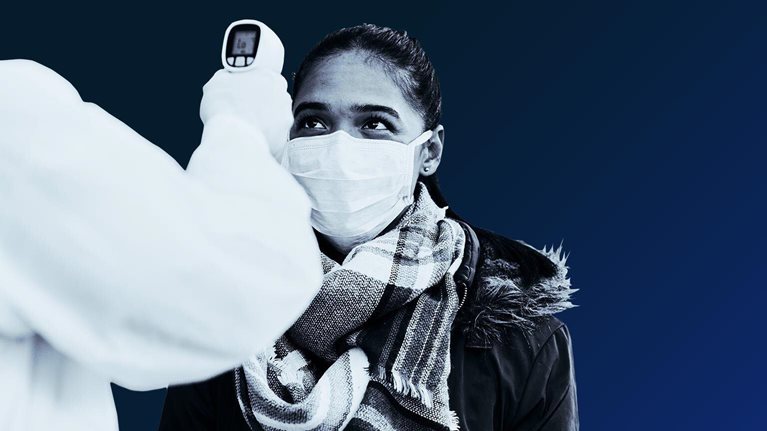COVID-19 is having a significant impact on morbidity and mortality across the world, with a current worldwide death total, as of June 2, of more than 376,000 people.1 The initial focus of all countries’ response has been to address the critical needs of COVID-19 patients. However, hidden acute and chronic implications of the outbreak could have deeper impact across the population.
Some evidence already exists of a major, indirect, and undermanaged health impact. Data from many countries across Europe are showing significant increases in excess deaths2 in March and April 2020. While many are likely attributable directly to COVID-19, up to 50 percent in some regions are recorded as non-COVID-19-related3 (Exhibit 1). It is possible that these effects are driven in part by health services cancellation and care avoidance, but data to truly understand the causes are limited.

COVID-19 may produce further, longer-term consequences, not just from reduced care provision, but from the impact of lockdowns on mental and physical health. As the economic downturn continues, and unemployment rises, even greater deleterious tangential effects stemming from the pandemic may arise.
While uncertainty remains, understanding the possible causes of this hidden health impact, and starting to monitor them closely, are among critical first steps for governments and health systems.
This article sets out some of these hidden effects, and outlines six considerations for governments and health system leaders as they design their response.
The health impact of COVID-19 can be grouped into four categories:
1. Direct health effects of COVID-19
As of early May, rates of new hospitalizations and deaths from COVID-19 were slowing in parts of Europe.4 However, health systems will need to continue to support those who survive the disease. Many patients requiring intensive care for COVID-19 are developing multi-organ failure.5 There also are early reports of possible long-term damage to lungs and other organs.67
Would you like to learn more about our Healthcare Systems & Services Practice?
2. Implications of reduced non-COVID-19 health services and care avoidance
Many health systems across Europe have cancelled or postponed tens of thousands of elective procedures and outpatient appointments.8 Care service levels are likely to remain affected for many months, and reinstating capacity cannot be instantaneous. For example, consider the need to ensure a robust personal protective equipment (PPE) supply chain, retain capacity for COVID-19 patients, and maintain a resilient workforce. The implications of deferring acute care, and support for those with longer-term conditions, may be significant. In England, for cancer alone, the postponement of diagnosis and treatment because of COVID-19 is projected by some to cause 18,000 additional deaths over the next 12 months.9
Many patients have not sought regular medical treatment during the pandemic, which may create short-term impacts. For example, emergency room rates in England for heart attacks fell to nearly half of baseline rates between March 20 and April 20.1011 The implications of treatment avoidance for patients with chronic or longer-term conditions also may be significant. Activity of general practitioners in France reportedly has dropped by 44 percent, and that of outpatient medical specialists by 71 percent between January and April 2020.12 According to a survey by the French firm Doctolib,13 conducted in April, 38 percent of patients cancelling cited the risk of infection, and 28 percent fear of disturbing their doctor during the crisis period.14 In the United Kingdom, to allow for critical care of COVID-19 patients, many services were stopped, reduced, and/or switched to telephone or video,15 while general practitioner appointments were down 30 percent in March from the previous year.16
While the rapid growth in telemedicine may change access to health advice permanently, it cannot entirely make up the current shortfall. In one example, in Australia, psychiatric admissions were down 39 percent in March 2020 compared to the previous year—while lifeline calls are 20 percent higher than for the average summer.17
3. Direct effects of lockdown
The lockdown itself is likely to directly impact healthcare needs, both physical and mental. Ninety-three percent of respondents in Italy, during the first week of lockdown, reported being at least a little anxious; 42 percent reported a drop in mood; and 28 percent reported not sleeping well.18 In the United Kingdom, mental health charities are reporting a doubling of reported feelings of loneliness since the lockdown began.19 While the impact of reduced mobility among those with long-term or chronic conditions is unclear, the most immediate reported physical impact is a rise in family violence. Spain’s governmental helpline for gender-based violence reported a 12 percent increase in call volume in the first two weeks of lockdown, with a 270 percent increase in online consultations of their website.20 The UN’s member states reported up to a 60 percent increase in emergency calls by women subjected to domestic violence in April.21
4. Health effects stemming from the long-term economic recession
In the article Safeguarding Europe’s livelihoods,22 the McKinsey Global Institute estimates that COVID-19 may almost double the unemployment rate in the coming years across Europe. Analysis from previous recessions suggests each 1 percent increase in unemployment correlates to a 0.8 percent rise in suicides23: this could mean up to an additional 1,500 to 5,500 suicides in Europe.2425 On top of this, there is a strong association between unemployment and life expectancy,26 which could suggest that the impact on mortality could be substantial. Considering mental health alone, unemployment could lead to the loss of 5.5 million quality-adjusted life years in the EU-27.27
It will take many months to fully estimate the future impact on all facets of the healthcare system. However, the indirect health implications may potentially outlast and outweigh the direct impact on COVID-19 patients (Exhibit 2).

Governments and health system leaders could review six critical considerations to minimize the longer-term impacts of COVID-19.
Consideration No. 1 Create information transparency across the healthcare spectrum
The data and information that health and care systems and governments have available today are often too limited, too fragmented, and too slow. Policy makers and health systems need much broader data feeds that can support fast, data-driven decision making. Specifically, they could:
- Move from offline to online reporting. Each country may consider a system to monitor, in real time, the likely incidence of common events, such as cardiovascular incidents, along with associated morbidity and mortality, in order to permit rapid intervention as needed. This process could be done through strengthening and, where needed, creating real-time observatories actively collating and monitoring data.
- Collect and collate information on all elements relevant to changing population health. This would include health system metrics (including waiting times, service cancellation, accident and emergency attendance volumes, diagnosis rates and severity at presentation); tracking the longer-term implications for recovered COVID-19 patients; mental health indicators (including population surveys, calls to helplines, service utilization, rates of suicides and attempts); surveillance on the impact of non-pharmaceutical interventions (including mobility data, excess drug and alcohol usage, as well as domestic abuse incidents and hotline utilization); and economic factors (including unemployment and furlough rates; household spending on healthcare).
- Model and estimate long-term implications. This process requires monitoring leading indicators of future health burdens (such as unemployment, and the utilization of services that support people with chronic or long-term problems), as well as modelling the future implications of current service disruption (for example, oncology surveillance).
- Act on the result of detailed reporting. Clarity about where regional pressure points of non-COVID-19 morbidity and mortality are occurring, as well as having an understanding of the reported cause of death. In addition, specific attention should be placed on vulnerable populations, such as those with chronic health conditions, the elderly, individuals experiencing homelessness, people who are unemployed, women, or other underserved populations.
Consideration No. 2 Accelerate, de-risk, and prioritize the return to the next normal
The speed at which health systems bring back urgent and elective care beyond COVID-19 is critical. In most countries in Europe, system capacity during the COVID-19 crisis has exceeded demand with a large proportion of the healthcare workforce temporarily stood down.28 This capacity should be rapidly redeployed. Delays in cancer treatment are likely impact outcomes,29 while postponing screening may result in cancers being detected at a later stage, which also affects prognosis.30 The first procedures and specialties to restart will need to be carefully prioritized, considering both the acuity of care needs, and the impact of delaying or not delivering care. Health systems are focused on ensuring their supply chains, managing their capacity, and supporting the resilience of their workforce, as discussed in McKinsey’s April 24, 2020 article, From “wartime” to “peacetime”: Five stages for healthcare institutions in the battle against COVID-19.31
Consideration No. 3 Invest in catching up
After quantifying the deficit in care provision resulting from the COVID-19 pandemic, systems may need to identify and quickly implement catch-up interventions. Systems will need to make up for healthcare and public health campaigns put on hold during the initial crisis response. This response could include nationwide vaccination catch-up campaigns, targeted cancer screening, regular follow-up of chronic conditions, and targeted mental health services to treat those who could not access care during quarantine or who are experiencing high levels of post-COVID-19 stress.
Consideration No. 4 Understand and counter behavioral change and harness the benefits of new approaches to care delivery
It is possible that the current crisis will have fundamentally altered the attitude of many toward healthcare. Some of it may be positive—for example, anti-vaccine sentiment may be reduced.32 However, an apparent avoidance of care as suggested by the reduction in emergency department attendances for a breadth of conditions, including stroke and heart attack,33 indicates negative effects. While hopefully transient, it will be important to identify any such trends and consider public health awareness campaigns to counter them.

From “wartime” to “peacetime”: Five stages for healthcare institutions in the battle against COVID-19
Consideration No. 5 Capture the momentum for change that COVID-19 has generated
There has been a dramatically higher use of digital and remote healthcare-related activities over the last few weeks and months. For example, a survey of physicians found the rate of remote patient consultations has increased up to six-fold across Europe.34 Dedicated COVID-19 treatment facilities have supported improved quality of care for patients,35 and the recruitment of volunteers at scale to support care services allows more effective use of highly trained professional staff.36 Pharmaceutical approval processes have accelerated, with clinical trials for medicinal interventions and vaccines for COVID-19 being launched in weeks rather than years.37 Maintaining these new ways of working, along with far greater workforce flexibility (assuming no negative impact on quality of care) can allow a quicker ability to return to providing all inpatient and outpatient services and transition to the “next normal.”
Consideration No. 6 Manage the additional health challenges with a crisis-level framework
A similar focus and investment to that seen in the COVID-19 crisis is now required to deal with indirect health impacts. One model may to be form a dedicated team specifically for non-COVID-19 health strategy—able to monitor current health needs, the demand for care, and available capacity—and prioritize the restarting of health and care services effectively.38 Other structures may exist but any model deployed should include clear prioritization of interventions based on health impact, mobilization of existing and new players, and the tracking of progress. The trade-offs are important, and the speed with which countries implement measures to counter the indirect health effects of COVID-19 may directly determine outcomes.
Conclusion
While the full extent of the impact of COVID-19 is not yet known, it is clear that it goes well beyond the immediate deaths and morbidity. The impact is likely to be felt for long after COVID-19 itself has been dealt with, with there being long-lasting implications for cancelled elective healthcare, mass unemployment, and extended social isolation. As governments and health systems look to re-open, it is clear that having a non-COVID-19 recovery plan is just as important as that for COVID-19 itself.


